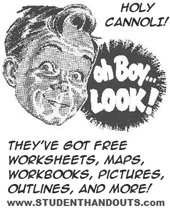Outlines and PowerPoints are valuable tools that can help high school World History students better understand the Revolutions of 1848, a complex series of uprisings that occurred across Europe. Outlines provide students with a clear and organized framework to follow, breaking down major causes, key figures, important events, and outcomes in a logical structure. This helps students see patterns, compare revolutions in different countries, and retain essential information more effectively.
PowerPoint presentations enhance learning by combining visuals and summaries that appeal to multiple learning styles. Maps, timelines, portraits, and political cartoons can be included to illustrate how and where revolutions unfolded, making abstract concepts more concrete. Bullet points and concise explanations keep the material accessible and easy to review, while visuals foster engagement and understanding.
Together, outlines and PowerPoints support note-taking, classroom discussions, and review sessions. They also allow for flexibility, letting teachers adapt content to different student needs and interests. By using these tools, educators can present the Revolutions of 1848 in a clear, focused, and interactive manner, helping students grasp both the uniqueness of each uprising and the broader themes of political change, nationalism, and social unrest in 19th-century Europe.
|








